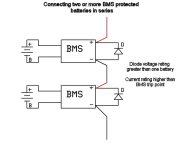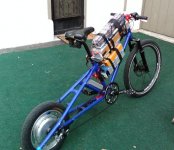d0pamine
10 µW
Hey all!
Here's my quandary:
I had a battery pack made from a legit china supplier for my first ebike build.
The battery pack is still relatively new and has the following specs:
52V 20AH 30a BMS
If I have another identical battery made by the same company would it be possible to connect them together in series with a connector like the one below?

If possible what would be the resulting output 104V 20AH XXa discharge ?
Is there a stock controller model i.e. sabvoton kelly etc that could handle 104V fully charged?
Worth mentioning is I'm trying my best to utilize the battery pack already made instead of paying nearly double for new pack with less than double the power (based on supplier quotes) to build a higher power bike project.
I don't think it would be worth taking the battery pack apart and rewiring 2 packs if that is the only way.
Any advice would be extremely appreciated! Let me know what you think
Here's my quandary:
I had a battery pack made from a legit china supplier for my first ebike build.
The battery pack is still relatively new and has the following specs:
52V 20AH 30a BMS
If I have another identical battery made by the same company would it be possible to connect them together in series with a connector like the one below?

If possible what would be the resulting output 104V 20AH XXa discharge ?
Is there a stock controller model i.e. sabvoton kelly etc that could handle 104V fully charged?
Worth mentioning is I'm trying my best to utilize the battery pack already made instead of paying nearly double for new pack with less than double the power (based on supplier quotes) to build a higher power bike project.
I don't think it would be worth taking the battery pack apart and rewiring 2 packs if that is the only way.
Any advice would be extremely appreciated! Let me know what you think



